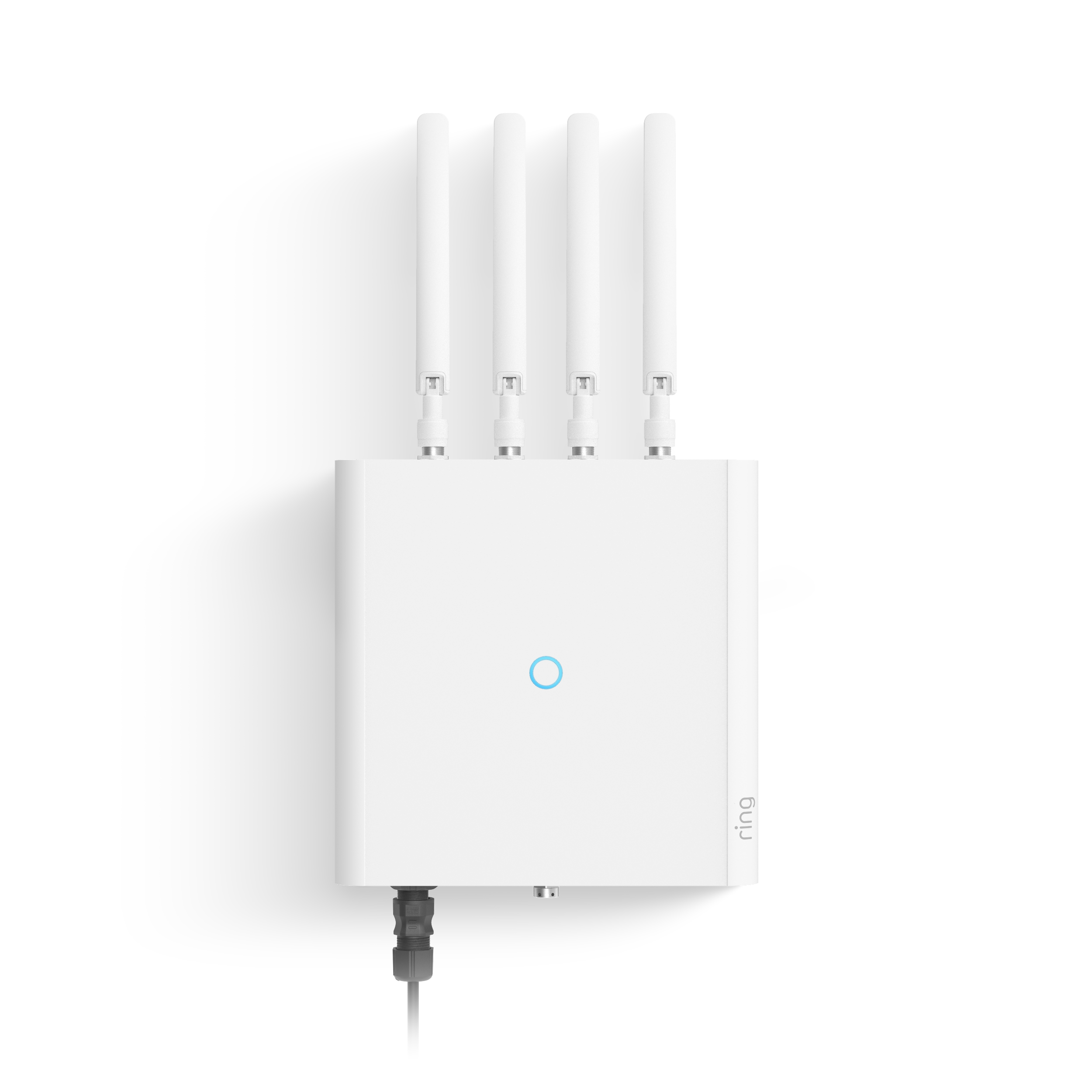Back in 2019, Amazon first announced its Sidewalk network, a new low-bandwidth, long-distance wireless protocol and network for connecting smart devices — and keeping them online when your own WiFi network, for example, goes down, by piggybacking on your neighbor’s network. Since last year, Amazon has been turning its Echo devices into Sidewalk bridges and select Ring and Tile devices can now access the network. Now, Amazon is launching its first professional-grade Sidewalk device meant to cover large areas like a university campus or park.
The full name for the new device is a mouthful: the Amazon Sidewalk Bridge Pro by Ring. It could be installed inside but is mostly meant to be set up outside — and ideally on a high spot — and can cover hundreds of devices up to five miles away (depending on the local circumstances, of course).
To test the devices, Amazon partnered with Arizona State University, which will install these new Sidewalk bridges on light poles on its Tempe campus. The University Technology Office plans to use it as a proof-of-concept with plans to connect sunlight and temperature sensors, CO2 detectors and particle counters.
Amazon is also partnering with Thingy, an IoT company that specializes in environmental monitoring, to install its air quality monitoring tools to alert first responders of potential wildfires.
“Amazon Sidewalk Bridge Pro brings us the power of [Long Range] in a massive number of needed locations, easy integration with our existing applications in AWS, and trusted security for the devices and applications. We are very excited to work with Amazon Sidewalk to measure air quality and wildfires with our sensors and help solve the connectivity challenges for these critical applications,” said Scott Waller, CEO and co-founder of Thingy.
But beyond the device itself, it’s the fact that Amazon continues to invest in the Sidewalk ecosystem that’s most important here.
“We’re building a network, we’re enabling actors to help the IoT industry,” Stefano Landi, the director of Amazon Sidewalk, told me. “At the end of the day, if we want to drive the proliferation of smart and connected devices everywhere, you need to have the right network. If you talk to IoT developers today, yes, there are many options, but either it’s very expensive, from a connectivity perspective vs. cellular, or the range is limited, or it’s draining the battery, or it’s just that the overall development cycle is too complex. So we felt that we should invest and that’s what we’ve done and we continue to invest in enabling these networks so that the IoT community can build any type of application: consumer, enterprise, public sector. ”
Landi noted that only a few months after launching the network, the company now has very strong residential coverage in more than 100 major U.S. metro areas. In part, of course, that’s because there are a lot of Echo devices in America’s homes and unless users opt out, most modern Echo smart speakers now have Sidewalk enabled by default. Not everybody is comfortable with that, though Amazon would argue that it designed its network to be privacy-first and that it won’t use a lot of bandwidth (it’s mostly for passing alerts, not your Ring camera’s video feed, after all). But it’s a fair guess that most users aren’t even aware of Sidewalk to begin with.
Covering a residential area is one thing, though. With the Sidewalk Bridge Pro, businesses can now also cover entire swaths of land to connect their sensors. There seems to be some demand for this, because Landi noted that “more than a few thousand companies” have already reached out to Amazon to ask about commercial use cases — mostly in connection with AWS IoT, the company’s cloud-based managed IoT service. A lot of this interest, Landis said, is coming from companies that want to build public sector solutions, mostly around smart city services.
“The Sidewalk Bridge Pro is a professional-grade bridge that is exactly tailored to be deployed outside of those [residential areas],” explained Landis. “So that now you have coverage pretty much everywhere. Think about commercial centers, parks, city parks, state parks, municipal parks, wildness areas, commercial area, and so on. Now you really bring that ubiquitous connectivity, so when you’re there, building a solution, you know that coverage is going to be pretty much anywhere that you need it.”
Landis noted that while he expects most users to install the bridge outdoors, it can also used indoors to cover a warehouse or a large store. And even though it’s explicitly called the ‘Pro,” we shouldn’t expect the company to launch a consumer-style “non-pro” version anytime soon. That’s what the Echo and Ring devices are for, after all.

